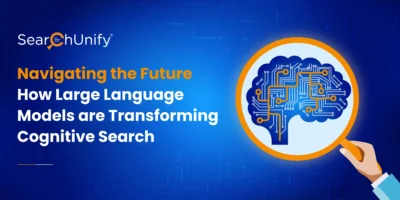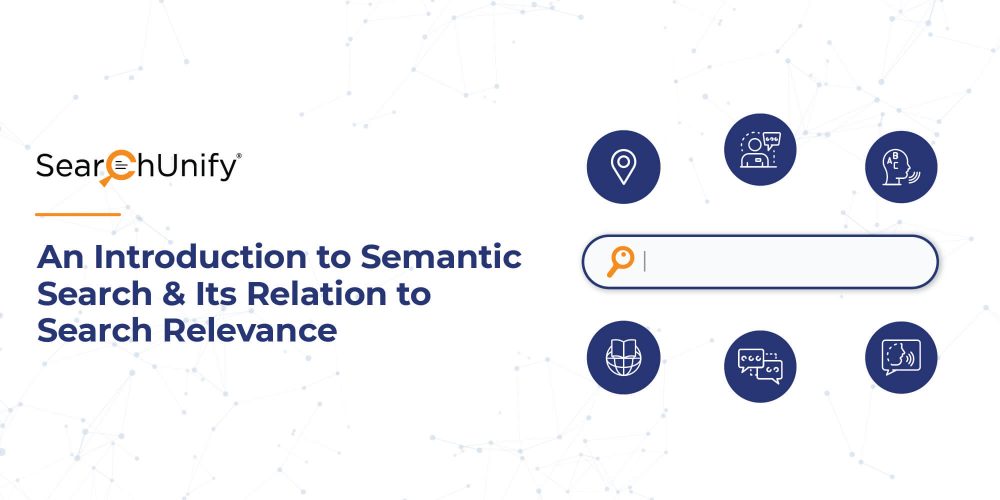
In the digital era, users can type or vocalize queries in a natural, free‑text way. The expectation is that irrespective of the type and mode of interaction, the technology will understand your words; and not just your words, but your intent as well and will display relevant results accordingly.
Well, this is where semantic search kicks in. Let’s take a closer look at its meaning, scope, and how it has revolutionized content discovery to enhance the overall search experience of end‑users. We’ll also shed light on how semantic search works differently within web and enterprise environments to help users accomplish their desired goals. Let’s get rolling.
What Is Semantic Search?
The dictionary meaning of semantics is “the branch of linguistics and logic concerned with meaning”. It is an attempt to disambiguate the meaning of every word or phrase that is a context‑dependent cluster of meaning with an ambiguous label. By taking into account the context of queries and the user intent, semantic search engines filter out irrelevant results at the very early stage of the search. They also keep a tab on users’ location, search history, word variation, synonym, acronym, foreign language, etc. to provide users with what they are seeking for.
Here are a few examples of semantic search that you experience on a day‑to‑day basis in your search queries:
1. Auto‑correction of Misspelled Words

2. Information Displayed as Knowledge Graphs
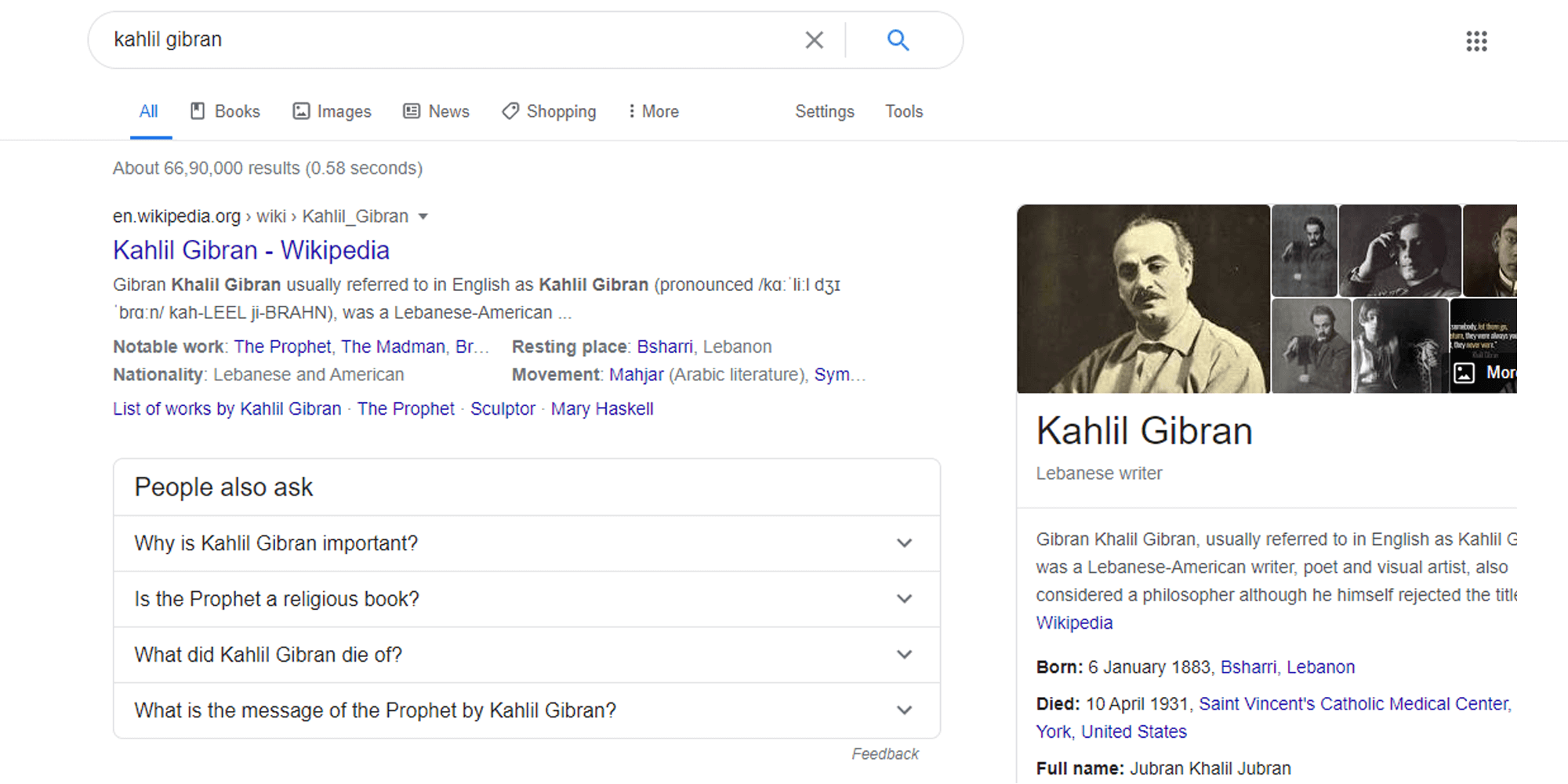
3. Conversational Queries and Results
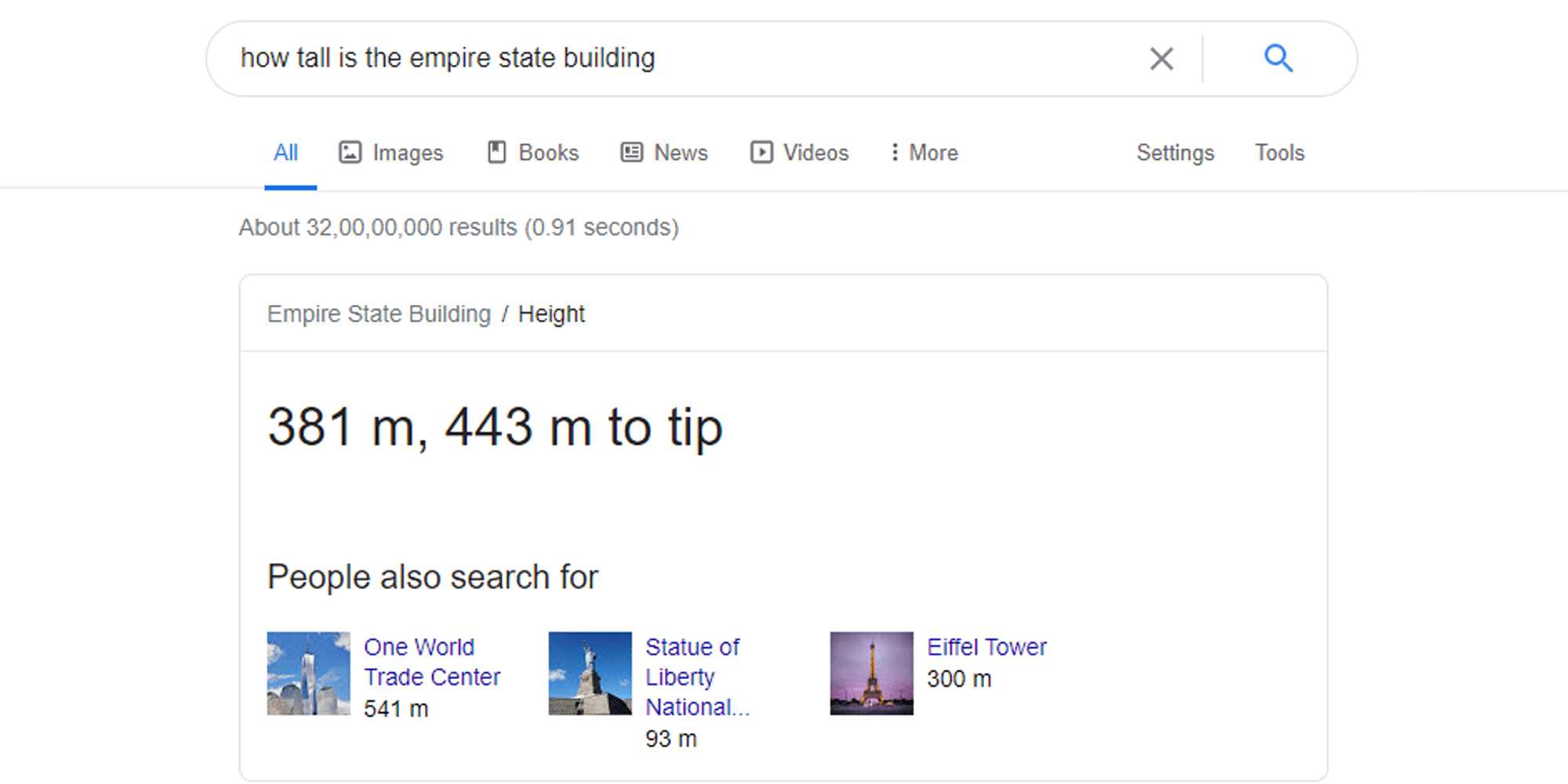
4. Recommendations Based on Your Search History

5. Recommendations Based on Your Location
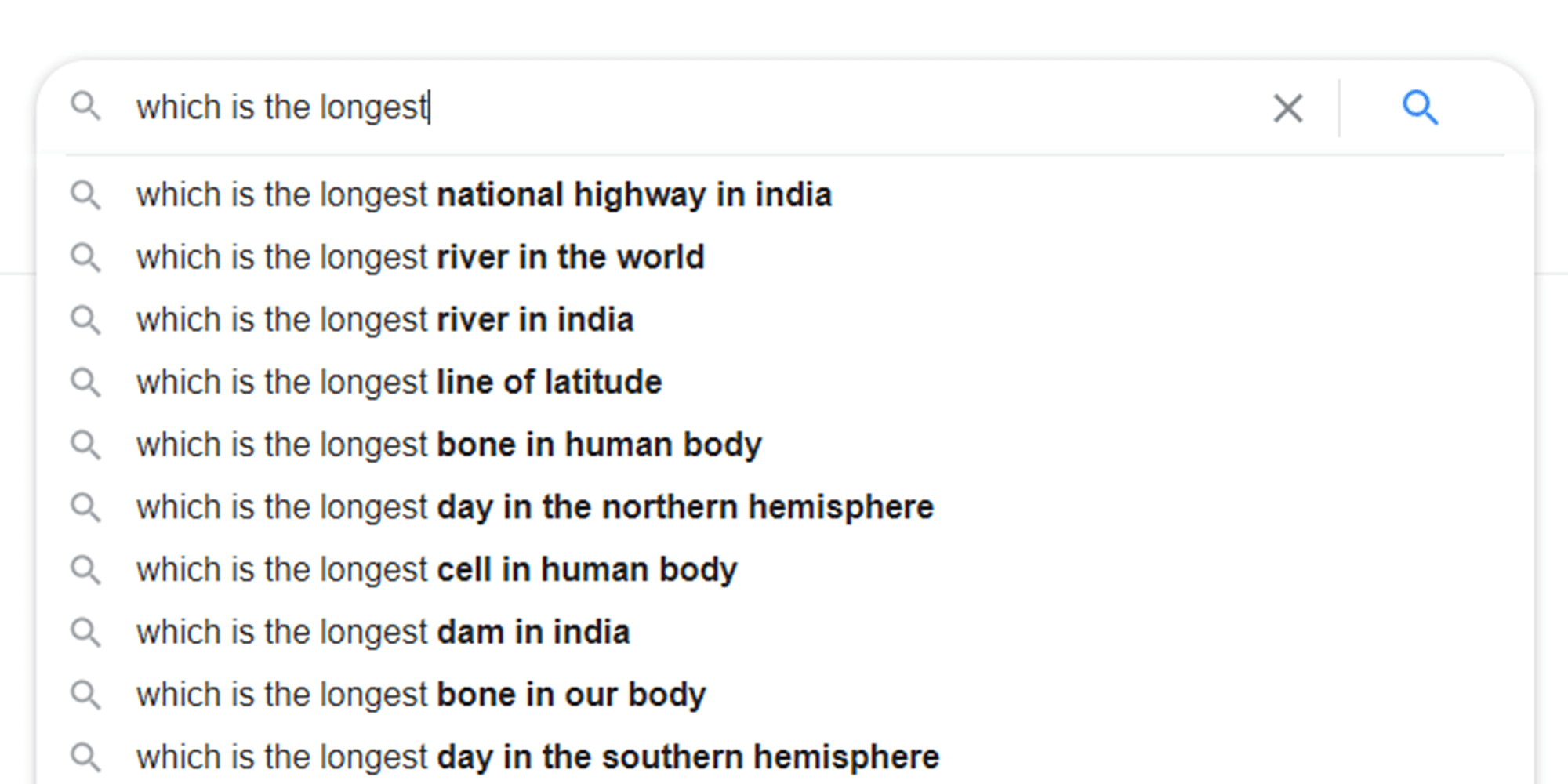
What Are the Prime Factors That Drive Semantic Search?
The two prime factors that drive semantic search are:
1. The User’s Search Intent
It refers to what the searcher is trying to accomplish from an online search. It could be anything such as learning, finding, or purchasing. By understanding the user intent, a search engine can produce more relevant results.
For example, a search query like “order pizza online” has a clear intention of buying; therefore, SERP displays the best restaurants and pizza places near your location.
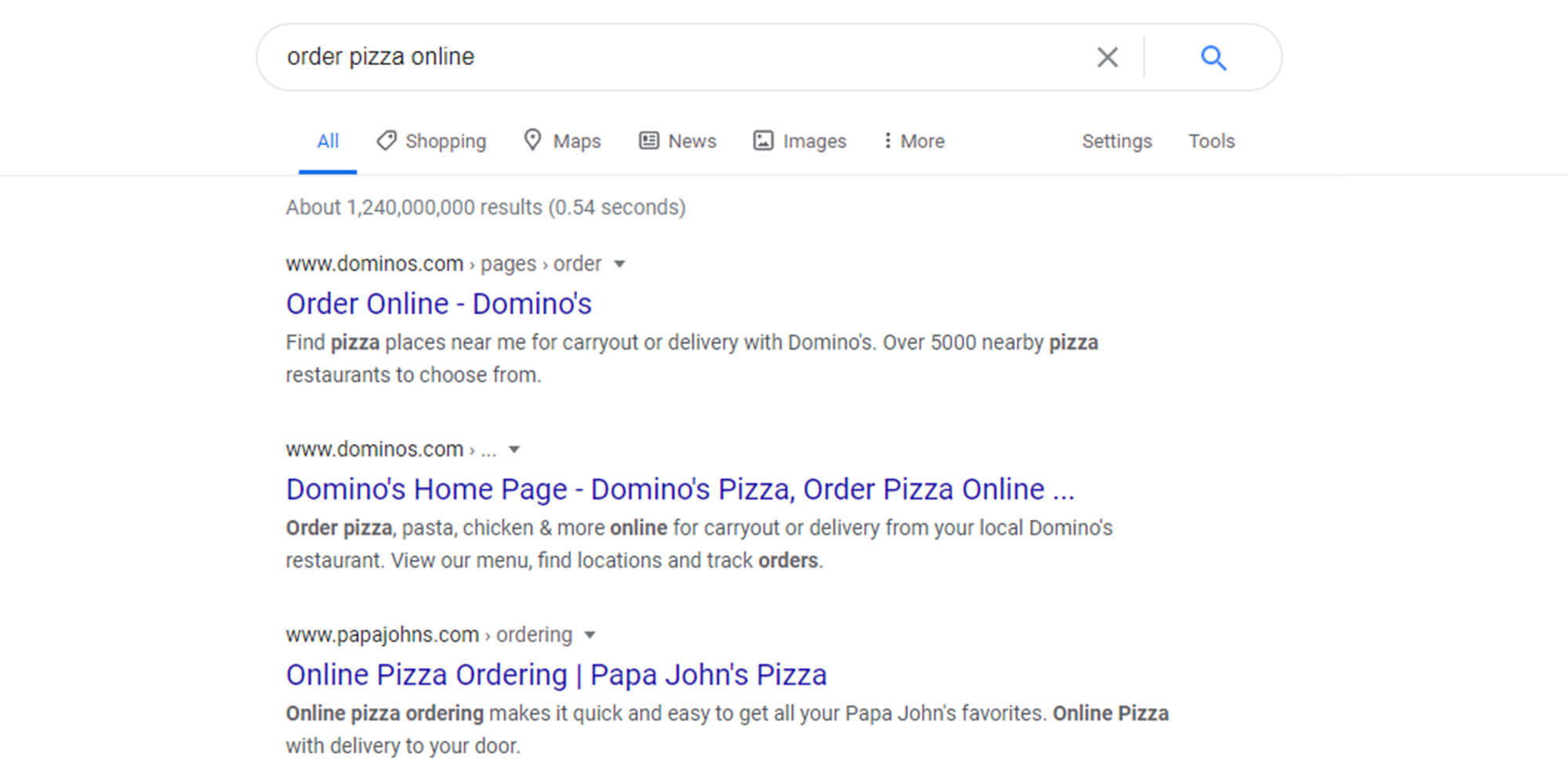
On the contrary, a search query like “how to bake pizza” has clear learning intent. Therefore, SERP displays links of recipes that educate you to bake pizza at home.

2. The Semantic Meaning of Search Terms
In the world of search, semantics map out a relationship between the words and phrases in a search query and digital content on webpages. To put it in layman’s terms, search engines display results that are closely related to the context of the search query.
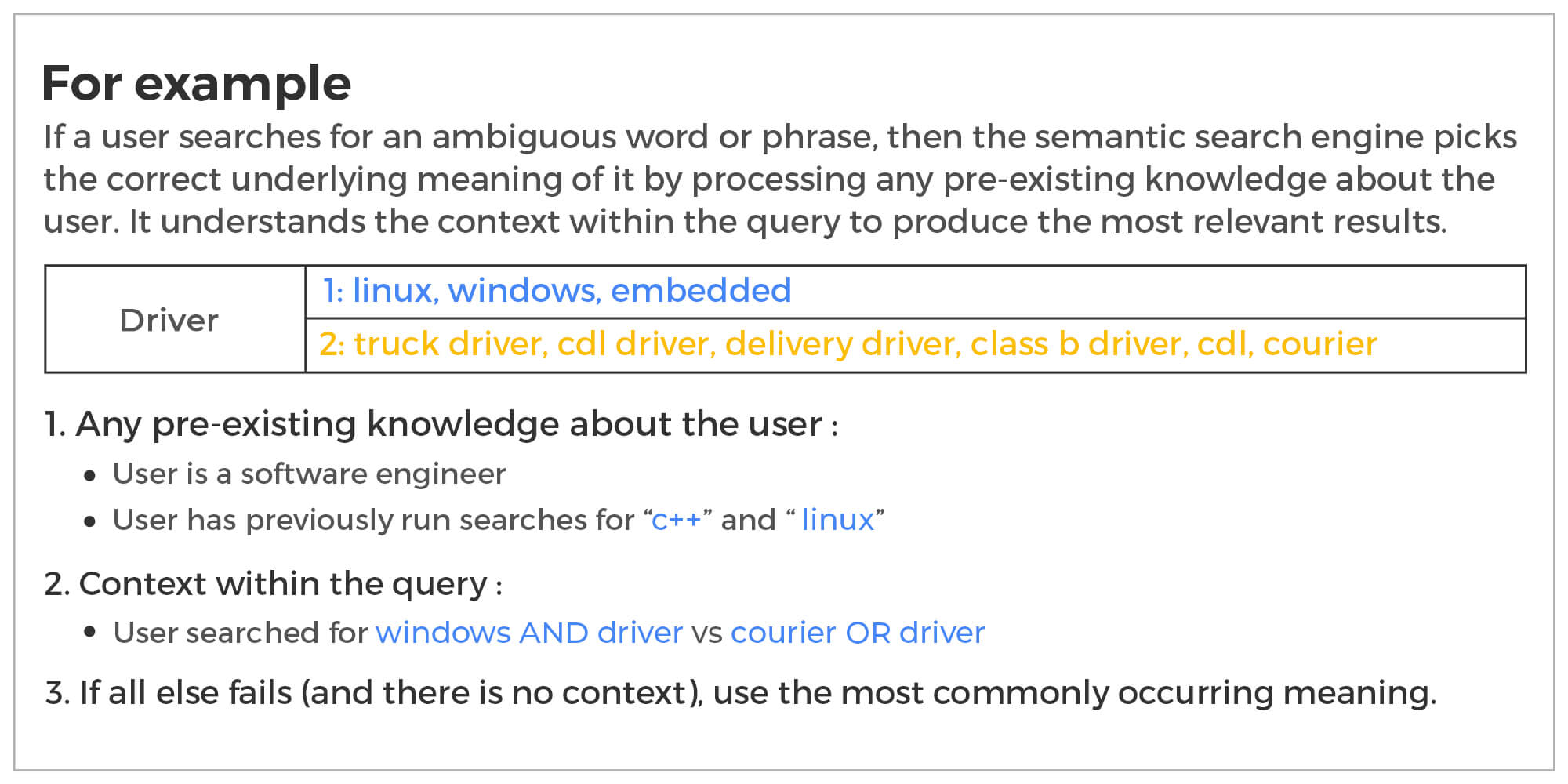
Why Is Semantic Search Better Than the Traditional Keyword‑Based Search?
At the most basic level, the answer is: It’s much more accurate.
As the name suggests, keyword‑based search is entirely based on the relationship between a user’s query and the keyword occurrence in innumerous web documents. Since traditional search engines don’t understand people’s natural language and the results are solely based on keyword occurrence and page rankings; one search leads to another search and it continues forever, leaving behind users unhappy and frustrated. On the flip side, the scope of semantic search engines extend beyond keywords entered in the search‑box. By processing existing knowledge about users, they unveil users’ search patterns to reflect humanlike understanding of language.
Why Web Search Won’t Work in an Enterprise Environment?
A cliche among those involved with enterprise search persists that clients are forever bewildered about ‘why it can’t be like Google’. Well, the simple answer is that an enterprise environment is completely different from the World Wide Web. Although they share the same data signals like intent, metadata, keyword frequency, etc., there’s a drastic difference between the two models.
For starters, the amount of data used by public search engines to provide a seamless search experience is not the same as enterprise content. Data sets for enterprise search engines are relatively smaller in size. Moreover, enterprise content is mostly unstructured whereas most of the web data is structured. So implementing the same algorithms, as used by web search engines, in enterprise environments will not deliver as relevant search results.
The following table will give you a fair idea about the different types of signals present on the internet and within enterprise:
| DATA SIGNAL | WEB SEARCH | ENTERPRISE SEARCH |
|---|---|---|
| Big data | Analysis of huge data sets help with search optimization and decision‑making | Data sets are rather small as compared to the web |
| Knowledge sources | There is just one source of knowledge: world wide web | Knowledge is scattered across cloud solutions, portals, help center, communities, collaboration tools, etc. |
| Data type | Most of the data is structured | Most of the data is unstructured |
| Access‑control | Web is freely accessible to everyone. Though some portals do require users to log in | Not everyone gets an all‑access pass. Sensitive information needs to be protected |
| Job title | Not available | Internal users’ job titles encompass what they might be interested in, thus aiding result optimization |
| Customer maturity | Not available | Access to maturity level (beginner or advanced) empowers the engine to hyper‑personalize search results |
| Purchase history | Not available | Access to customer purchase data empowers engine to better upsell and cross‑sell |
| Author | Not available | Aids with identification of SMEs for different topics |
Want to learn more about search relevance and how you can attain it within your enterprise?
If you want to satiate your inquisitiveness and learn how cognitive technology powers semantic search to deliver the desired results within your enterprise, then here’s a whitepaper for you ‑ The Anatomy of Search Relevance. It will walk you through the quintessential steps that ensure relevance nirvana without compromising on the industry security standards. Download it for free and achieve your search objectives. Download it now!



